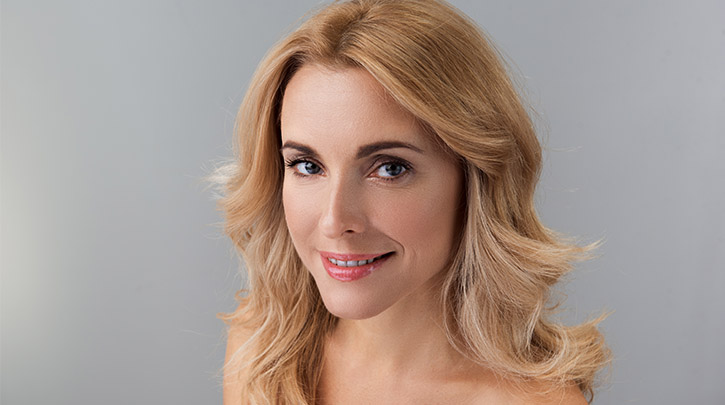
- Global
Get non-surgical solutions for today's top aesthetic concerns with Venus Treatments. Join thousands of satisfied patients worldwide!
- Loading...
- All Regions
Get non-surgical solutions for today's top aesthetic concerns with Venus Treatments. Join thousands of satisfied patients worldwide!

Aging skin is forever being studied and new developments in anti-aging skin care are constantly emerging. The more we learn, the more myths we’re able to debunk. To ensure your anti-aging skin care routine is on the right track, take note of these top 10 common misconceptions about aging skin. This way you can maintain a smoother, younger-looking complexion for longer by giving your skin exactly what it needs and cutting what isn’t helping.
It seems to have become a common belief that skin care at a younger age is important to prevent damage and once we hit 18, we suddenly switch to reversing the damage rather than still considering prevention. But skin is actually even more vulnerable as we age. Higher levels of sun exposure in earlier years can leave aging skin helpless to further UV damage and carries a higher risk for skin cancer. Instead of focusing wholly on products to erase UV damage, balance your anti-aging skin care toolkit with products that sustain skin health and offer protection from our everyday environmental aggressors. Two basics to consider are sunscreen and photofacial treatments for damage prevention and correction. Custom photofacial treatments powered by advanced Intense Pulsed Light (IPL) technology target pigment under the skin's surface to reduce the appearance of discoloration and the most common premature signs of aging, such as sun spots and vascular marks, while improving skin health to smoothen fine lines and wrinkles.
It’s been a point of argument for a while that crossing our legs for extended periods interrupts healthy blood circulation, leading to varicose veins. However, the cause of varicose veins isn’t as cut and dry as that. Factors such as genetics, pregnancy, obesity, and even occupation can play a role. It’s true that varicose veins are a result of poor blood circulation in the legs leading to pooling, inflammation, swelling, and sometimes pain, but simply uncrossing your legs won’t affect your risk all that much, especially considering that 80% of those with varicose veins also have at least one parent who also has them. Massage, exercise, and compression stockings may help manage varicose veins, but for many, surgical aesthetic treatments may be the best option for reducing their appearance. Meanwhile, spider veins—an early sign of varicose veins—may be treated with non-surgical photofacial treatments to reduce the appearance of these vascular marks.
It’s common to assume that acne is simply linked to fluctuating hormones in our teenage years, and that’s partially true. Unfortunately, it’s not always limited to our teens and generally speaking, women won’t just grow out of it. If you’re experiencing adult acne now, chances are you’ll keep experiencing it or it will crop up again during menopause. The culprit is the male hormone androgen, which spurs sebum production in oil glands and causes dead skin cells to become sticky. All of this leads to clogged pores and blemishes. Additionally, with age, estrogen levels drop in women during menopause and breakouts crop up again as androgen and estrogen fall out of balance. While acne-specific skin care can help, some treatments can be too drying for aging skin. Instead, consider IPL-based acne treatments. Powered by IPL energy, these treatments eliminate acne-causing bacteria while reducing acne-related inflammation for clearer, healthier-looking skin without over-drying it.
Washing skin properly to ensure you remove all of the day’s environmental aggressors, makeup, and debris is essential to keep skin’s lipid barrier strong and healthy, and skin looking smooth and radiant. But there is a fine balance between sufficient cleansing and over-cleansing. Avoid cleansers with harsh ingredients like sodium lauryl sulfate (SLS) or ammonium lauryl sulfate (ALS), among others. These ingredients are too harsh for most skin types, stripping away healthy essential oils and leaving skin feeling tight, irritated, and dehydrated. In other words, squeaky-clean is not necessarily a good thing when it comes to skin care.
In contrast, oily skin may resist dehydration, but excess sebum isn’t a protective barrier against wrinkles. Generally speaking, those with higher testosterone levels often have oilier and thicker skin—a combination that can fend off the appearance of fine lines for longer. But oil production levels have no effect on collagen production and they certainly can’t block UV damage. So while oily skin can be a benefit, it’s not a free pass. Proper anti-aging skin care and cleansing habits still need to be followed for wrinkle prevention, whatever your skin type.
The face yoga trend has been going strong for a while. Touted as an anti-aging exercise routine for the face to fend off loose skin and wrinkles, aesthetic professionals can’t seem to agree on whether face yoga is effective or not. In fact, some argue that it could make skin laxity worse! To add to this, there is no authoritative study proving its effectiveness. Components such as massage and oil application could be the reason some facial yoga fans report a healthier glow and even a decrease in the appearance of fine lines, as muscle tension is released and skin hydration is boosted. Instead of incorporating a long daily facial yoga sequence, consider incorporating facial massages into your skin serum or moisturizer applications and sub out poses like “easy crows” and “snarls” for more proven skin-firming methods, such as non-surgical anti-aging treatments. These treatments utilize proven radio frequency (RF) energy to produce heat deep below the skin’s surface and stimulate healthy collagen and elastin production to restore skin’s framework for a smoother, firmer appearance on the face and neck.
Injectables can only offer temporary results. Over time, injectables dissolve and their effects fade. Fillers injected to treat fine lines and wrinkles does temporarily plump skin for a smoother appearance; however, injectables do not affect skin on a cellular level. In other words, injectables can ward off signs of aging but ultimately, the wrinkles win out in a matter of months. For a longer-term result, proper skin and sun care are essential, alongside aesthetic treatments that boost skin’s collagen and elastin production levels, which are the two essential building blocks for healthy, younger-looking skin. Supporting collagen and elastin formation allows skin to better ward off fine lines and wrinkles over a longer period with less maintenance required compared to injectables.
It’s true that out of the many, many supposed anti-aging topical miracle workers, the effects of retinoic acid (Retin-A) are well supported. Plenty of studies suggest a Retin-A topical treatment can effectively reduce the appearance of wrinkles and prevent the formation of further fine lines. However, Retin-A is no miracle worker. Believing a topical can erase the effects of years of collagen- and elastin-damaging UV exposure is a surefire way to set your anti-aging skin care up for failure. Pair Retin-A skin care with adequate sunscreen and ensure you’re not asking too much from your topicals. For example, smoking can negatively affect skin health on a cellular level with which Retin-A just can’t compete. Instead, keep the Retin-A but quit smoking and consider supporting skin health deep below the surface with RF-based wrinkle reduction treatments. With a few quick sessions, these anti-aging treatments can firm up skin and reverse damage from lifestyle factors such as prolonged sun exposure, a poor diet, smoking, stress, hormonal changes, and more. Wrinkle reduction treatments are the perfect boost to a strong anti-aging skin care toolkit to support the effects of your Retin-A serum.
Like collagen supplements, there is no guarantee that the water you’re consuming is being delivered straight to your skin. It is important to note that as an organ, skin is made up of water-retaining cells and elements that, without adequate H2O, may become weakened and dehydrated. Add to this the fact that water can help to flush toxins from the body that could damage otherwise healthy skin cells and it seems that there is still a benefit to drinking water, even it isn’t a guarantee for hydrated skin. Instead, pair those eight glasses a day with a moisturizer containing hyaluronic acid, which attracts water molecules and can retain up to 1,000 times its weight in water. These characteristics make for the perfect topical to support skin hydration from the outside, while water consumption supports general healthy cell renewal from the inside.
What you eat really can have an impact on skin health, so it’s time to start considering diet as part of your skin care routine. As with hormones, components in the foods we eat can affect skin on a cellular level. For example, breads, pastas, and potatoes with a high glycemic index stimulate the formation of advanced glycation endproducts (or AGEs) that increase blood sugar levels and can destroy otherwise healthy collagen and elastin fibers. Skin loses its flexibility and elasticity, leading to sagging, fine lines, and wrinkles, while also becoming more vulnerable to UV damage. While an indulgence here and there may not have an ongoing effect, regular consumption of foods that cause AGEs can be your skin’s greatest enemy. Likewise, a healthy diet full of antioxidants, amino acids, and nutrients that support healthy cell renewal, collagen production, and an overall feeling of good health can be your skin’s greatest support system.
Anti-aging skin care is complex, since there are many factors that contribute to your skin health. But being aware of how you’re treating your overall health while ensuring your skin care routine is covering the basics, like UV protection year-round, can help to halt premature signs of aging. For those looking for an added boost to reverse current signs of aging, consider one of the non-surgical aesthetic treatments we mentioned above that can boost skin health well below the surface and support natural collagen production cycle for a smoother, firmer appearance. Discover the perfect plan and locate a certified treatment provider near you today using the search field below.
Find a certified Venus Treatments provider near you today who specializes in today’s top aesthetic medical solutions.



Search below to find a provider near you and to learn about our non-surgical aesthetic treatments with ARTAS®, NeoGraft®, Venus Bliss™, Venus Blilss MAX™, Venus Versa™, Venus Legacy™ Venus Versa™ Pro, Venus Velocity™, Venus Viva™ MD, and Venus Glow™.
For more information call: (888) 907-0115 // [email protected] // 235 Yorkland Blvd., Suite 900, Toronto, ON, M2J 4Y8 Canada
REGULATORY CLEARANCES [ More ]
Venus Bliss™ is cleared by the FDA and licensed by Health Canada for non-invasive lipolysis of the abdomen and flanks in individuals with a Body Mass Index (BMI) of 30 or less, with the diode laser applicators. The (MP)2 applicator is cleared by the FDA for temporary reduction in the appearance of cellulite, and licensed by Health Canada for temporary increase of skin tightening, temporary circumferential reduction, and temporary cellulite reduction. Venus Bliss™ has CE Mark as a non-invasive medical aesthetic device enabling a comprehensive approach leading to body contouring, addressing fat reduction, skin tightening, circumference reduction, and cellulite reduction.
Venus Versa™ is cleared by the FDA, licensed by Health Canada, and has CE Mark as a multi-application device intended to be used in aesthetic and cosmetic procedures. The SR515 and SR580 applicators are cleared by the FDA, licensed by Health Canada, and have CE Mark for the treatment of benign pigmented epidermal and cutaneous lesions and treatment of benign cutaneous vascular lesions. The HR650/HR650XL and HR690/HR690XL applicators are cleared by the FDA, licensed by Health Canada, and have CE Mark for the removal of unwanted hair and to effect stable long-term or permanent hair reduction for Fitzpatrick skin types I-IV. The AC Dual applicator is cleared by the FDA, licensed by Health Canada, and has CE Mark for the treatment of acne vulgaris. The DiamondPolar™ and OctiPolar™ applicators on the Venus Versa™ system are cleared by the FDA for non-invasive treatment of moderate to severe facial wrinkles and rhytides on females with Fitzpatrick skin types I-IV. The DiamondPolar™ applicator is licensed by Health Canada and has CE Mark for non-invasive treatment of moderate to severe facial wrinkles and rhytides on females with Fitzpatrick skin types I-IV. The OctiPolar™ applicator on the Venus Versa™ system is licensed by Health Canada and has CE Mark for temporary body contouring via skin tightening, circumferential reduction, and cellulite reduction. The NanoFractional RF™ (Viva) applicator is cleared by the FDA, licensed by Health Canada, and has CE Mark for dermatological procedures requiring ablation and resurfacing of the skin.
NeoGraft® is cleared by the FDA, licensed by Health Canada and has CE Mark with indication for use in suction-assisted follicular extraction and re-implantation. It is an auto-graft system and can be used on both male and female patients.
ARTAS iX™ is cleared by the FDA, licensed by Health Canada and has CE Mark with indication for use for harvesting hair follicles from the scalp in men diagnosed with androgenic alopecia (male pattern hair loss) who have black or brown straight hair. ARTAS iX™ is intended to assist physicians in identifying and extracting hair follicular units from the scalp during hair transplantation; creating recipient sites; and implanting harvested hair follicles.
Venus Legacy™ is cleared by the FDA for the non-invasive treatment of moderate to severe facial wrinkles and rhytides in females with Fitzpatrick skin types I-IV with the OctiPolar™ and DiamondPolar™ applicators, and temporary reduction in the appearance of cellulite with the 4D Body (LB2) and 4D Face (LF2) applicators. It is licensed by Health Canada and has CE Mark for the temporary increase of skin tightening, temporary circumferential reduction, temporary cellulite reduction, and temporary wrinkle reduction.
Venus Velocity™ is cleared by the FDA, licensed by Health Canada and has CE Mark for hair removal, permanent hair reduction (defined as the long-term stable reduction in the number of hairs re-growing when measured at 6, 9 and 12 months after the completion of a treatment regimen), and the treatment of pseudofolliculitis barbae for all Fitzpatrick skin types.
Venus Fiore™ received regulatory approval in Israel for aesthetic and functional treatment of the vagina, labia and mons pubis. Venus Fiore™ is available for sale in India, Hong Kong, and other selected Asian countries.
Venus Viva™ is cleared by the FDA, licensed by Health Canada, and has CE Mark for dermatological procedures requiring ablation and resurfacing of the skin. The DiamondPolar™ applicator is cleared by the FDA, licensed by Health Canada and has CE Mark for the treatment of moderate to severe wrinkles and rhytides in Fitzpatrick skin types I-IV.
Venus Freeze Plus™ is cleared by the FDA for the non-invasive treatment of moderate to severe facial wrinkles and rhytides in females with Fitzpatrick skin types I-IV. It is licensed by Health Canada for temporary skin tightening, and temporary reduction in the appearance of cellulite on the abdomen and flanks, using the DiamondPolar™ and OctiPolar™ applicators. The DiamondPolar™ applicator on Venus Freeze Plus™ has CE Mark for the non-invasive treatment of moderate to severe facial wrinkles and rhytides, and the increase of skin tightening, temporary circumferential reduction, and cellulite reduction with the OctiPolar™ applicator.
Venus Heal™ is licensed by Health Canada and can be used for the treatment of both acute and chronic disorders of the musculoskeletal system, such as muscle spasms, back pain, and soft tissue injuries, and results in effects such as pain relief, myorelaxation, increase of local blood circulation, and edema reduction. In the U.S., Venus Heal™ is cleared by the FDA for the relief of minor muscle aches and pain, relief of muscle spasm, and temporary improvement of local blood circulation. These indications enable the treatment of certain soft tissue injuries and conditions.
Venus Glow™ is cleared by the FDA as a Class I motorized dermabrasion device. It provides a dermal rejuvenation treatment that works to open up and deep-clean pores. Venus Concept is the exclusive distributor for Venus Glow™.
Venus Epileve™ is licensed by Health Canada and has CE Mark for hair removal, permanent hair reduction (defined as the long-term stable reduction in the number of hairs re-growing when measured at 6, 9 and 12 months after the completion of a treatment regimen), and the treatment of pseudofolliculitis barbae for all Fitzpatrick skin types. Venus Epileve™ is also CE-Marked for hirsutism.
Venus Freeze™ is cleared by the FDA for the non-invasive treatment of moderate to severe facial wrinkles and rhytides in females with Fitzpatrick skin types I-IV. It is licensed by Health Canada for temporary skin tightening, and temporary reduction in the appearance of cellulite on the abdomen and flanks, using the DiamondPolar™ and OctiPolar™ applicators. The DiamondPolar™ applicator on Venus Freeze™ has CE Mark for the non-invasive treatment of moderate to severe facial wrinkles and rhytides, and the increase of skin tightening, temporary circumferential reduction, and cellulite reduction with the OctiPolar™ applicator.
Venus Swan™ is cleared by the FDA for the non-invasive treatment of moderate to severe facial wrinkles and rhytides, and licensed by Health Canada for the non-invasive treatment of cellulite reduction, skin tightening, and temporary reduction in the appearance of stretch marks.
Copyright © 2024 Venus Concept. All rights reserved.
You are entering our website. For other countries/regions and language options, please click the SELECT A DIFFERENT REGION button below.
SELECT A DIFFERENT REGIONAre you looking to get a treatment? Please visit our patient website to learn more.
Click HereUnsure which aesthetic treatment is right for you? Take this quick and easy quiz to discover treatments that suit your needs.
Get Started